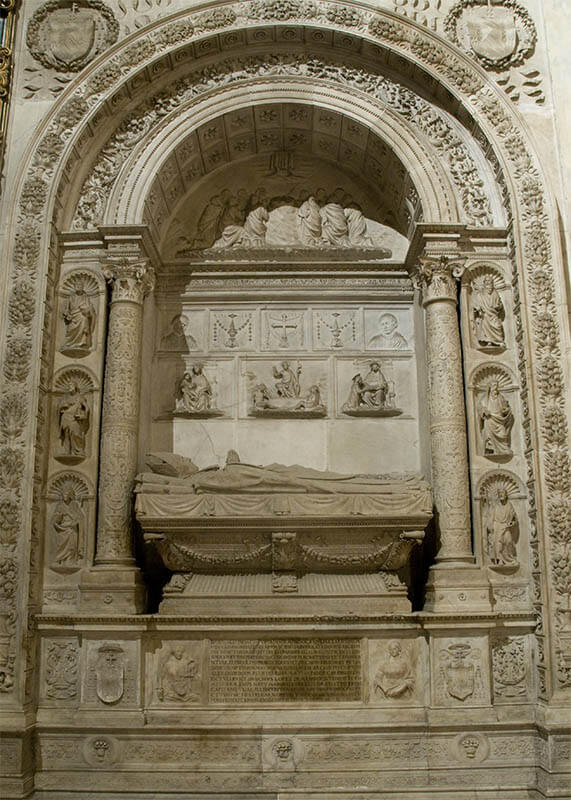
Domenico FANCELLI, 1510
Capilla de la Antigua
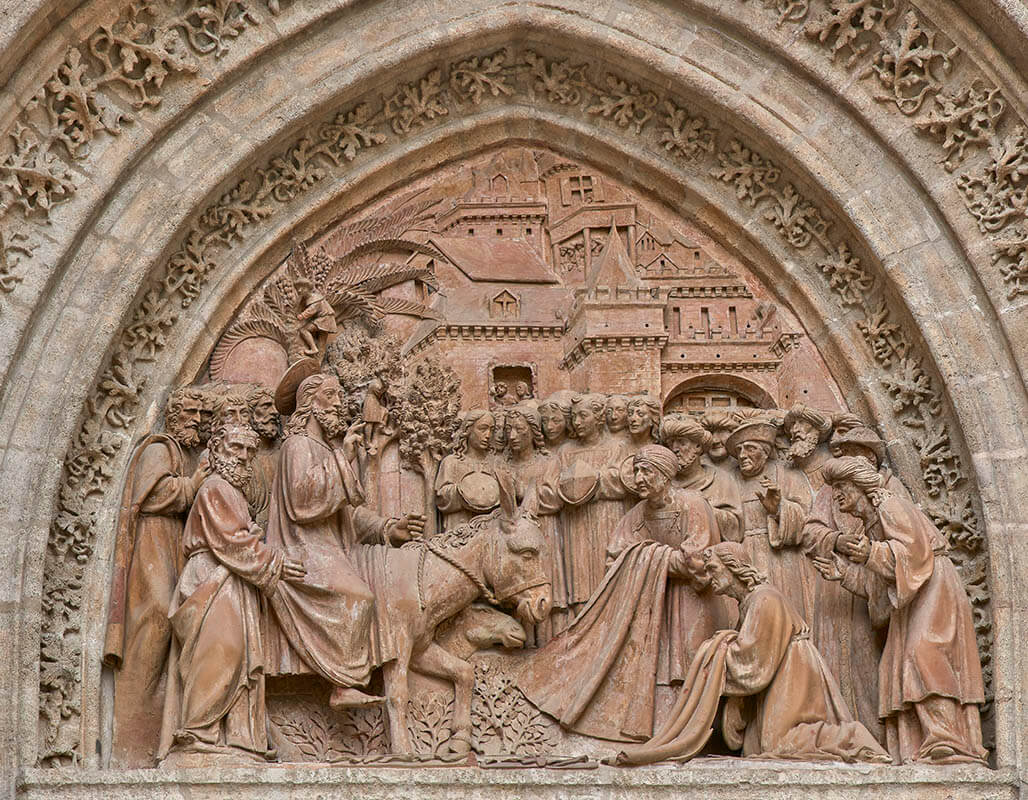
Miguel PERRIN, 1522 – 1523
Tímpano de la puerta de la campanilla
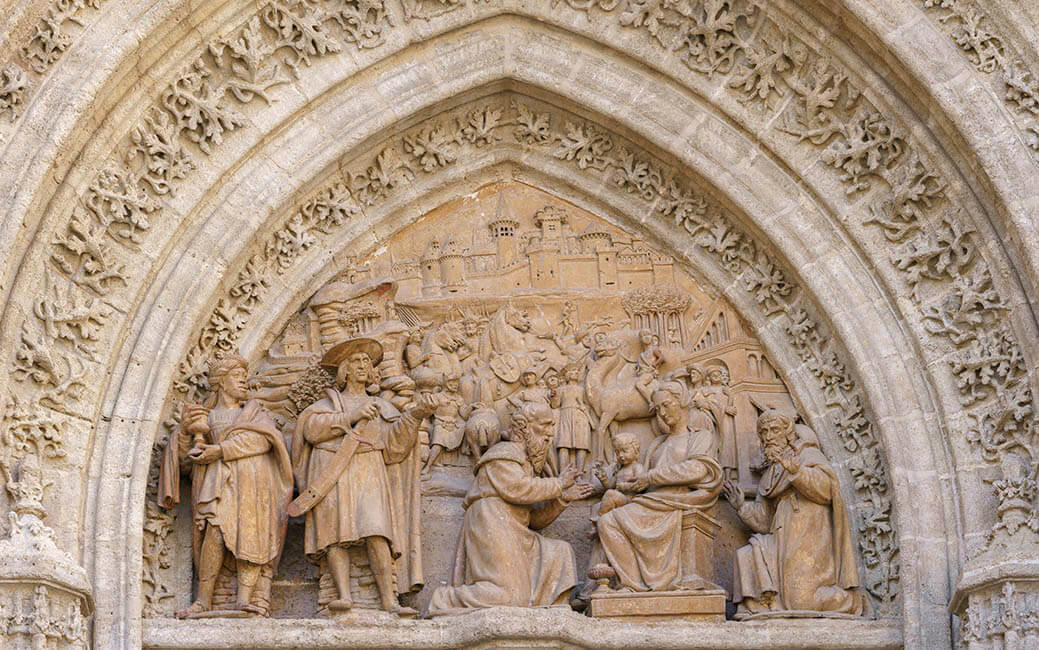
Miguel PERRIN, 1520 – 1522
Tímpano de la puerta de los palos
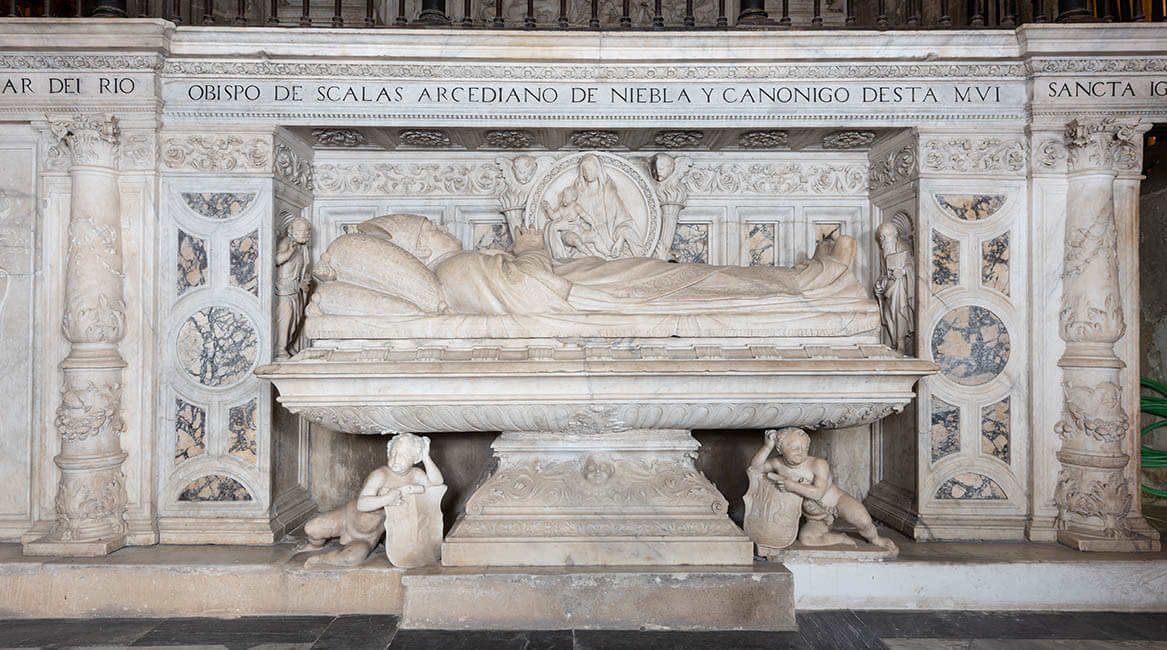
ANÓNIMO,, 1539
Capilla de Scala
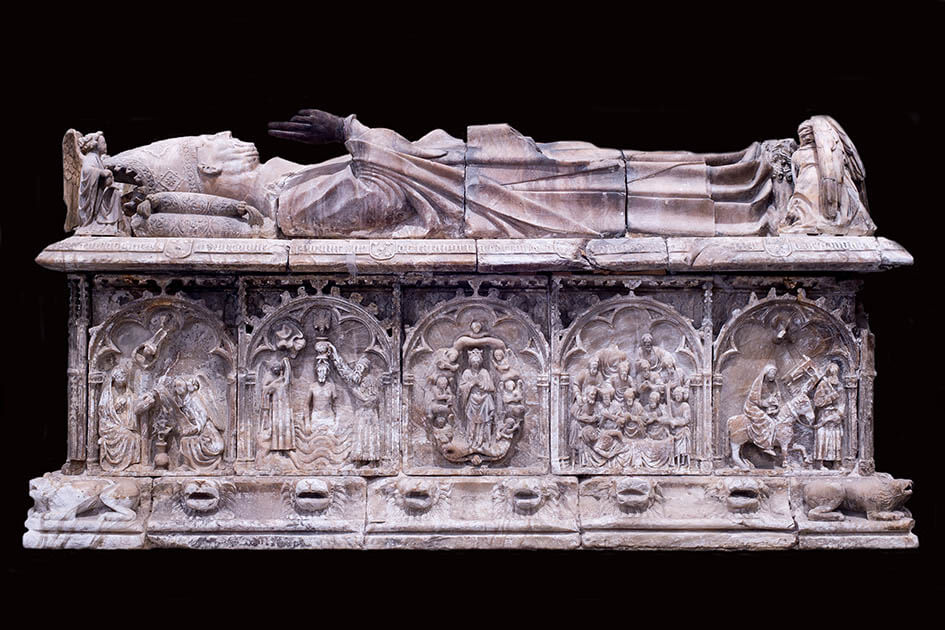
ANÓNIMO, 1401
Capilla de Santiago
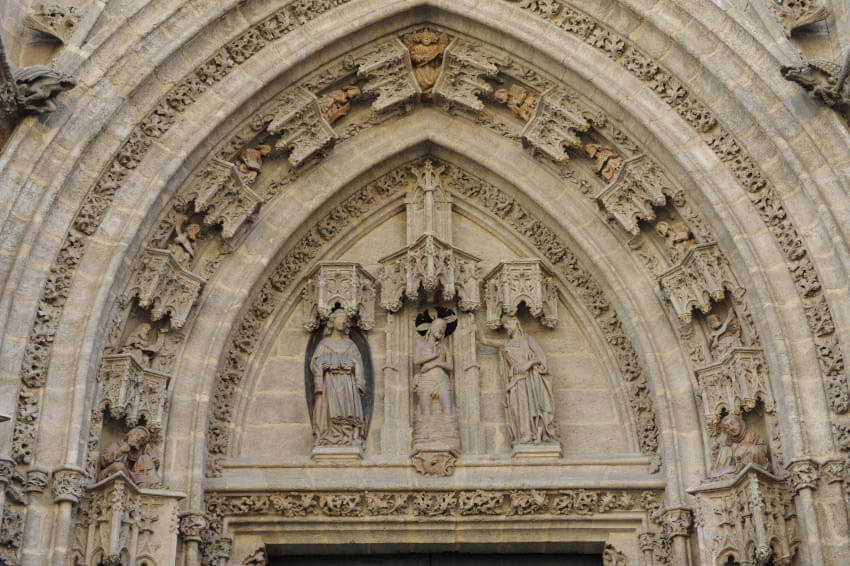
Pedro MILLÁN, Siglo XV
Tímpano de la puerta del baptisterio
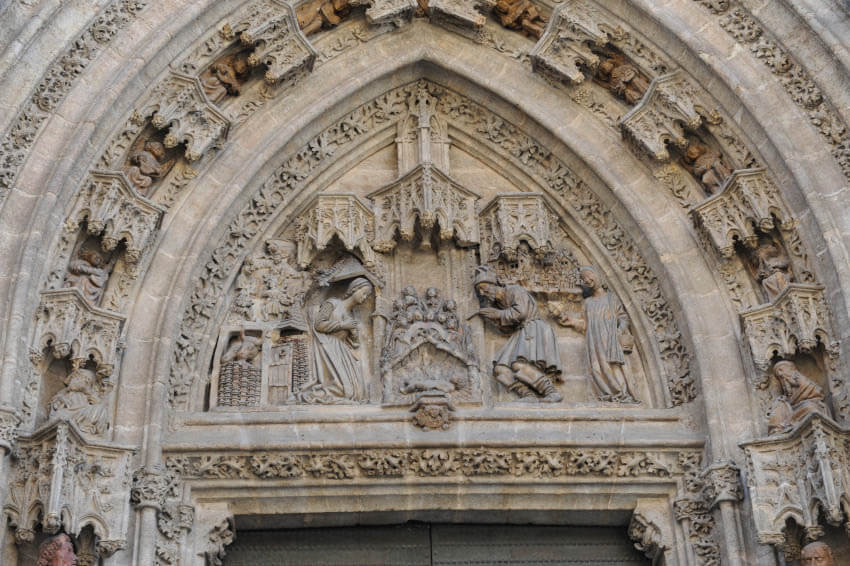
Lorenzo de MERCADANTE, Siglo XV
Tímpano puerta de San Miguel
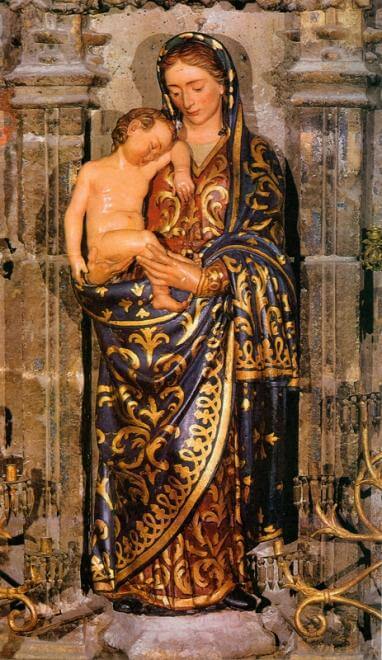
Miguel PERRIN, 1540
Trasaltar de la Capilla Mayor
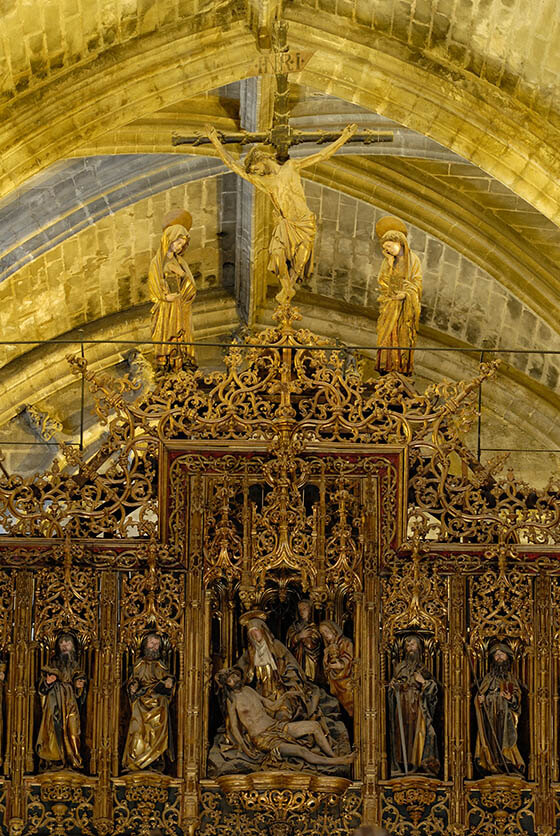
ANÓNIMO, Siglo XIV
Parte superior del Altar Mayor, a 26 m
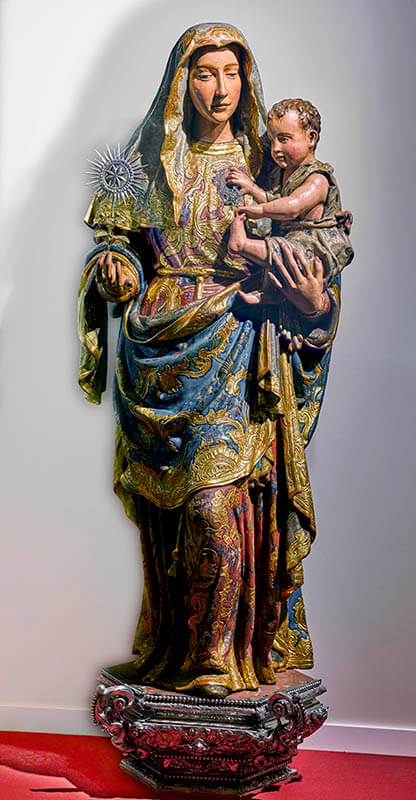
Atribuida a Nicolás de LEÓN, Siglo XVI
Capilla Virgen de la Estrella
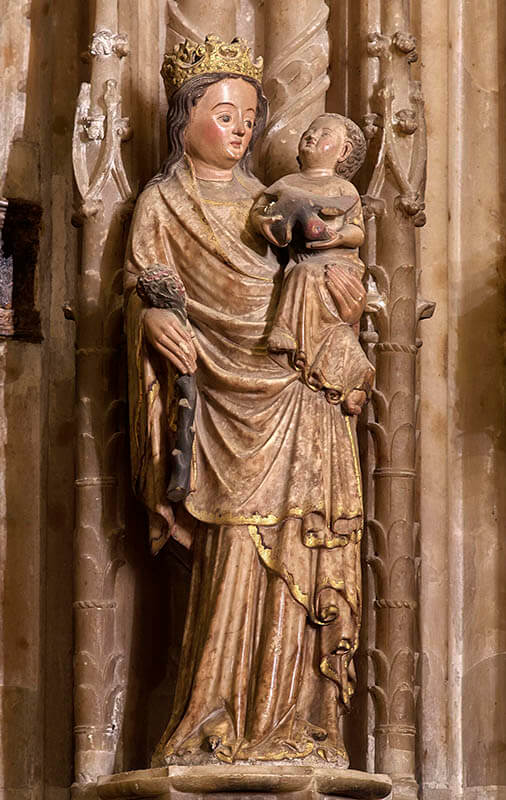
ANÓNIMO, Siglo XIV
Capillas del alabastro, lado de la Epístola
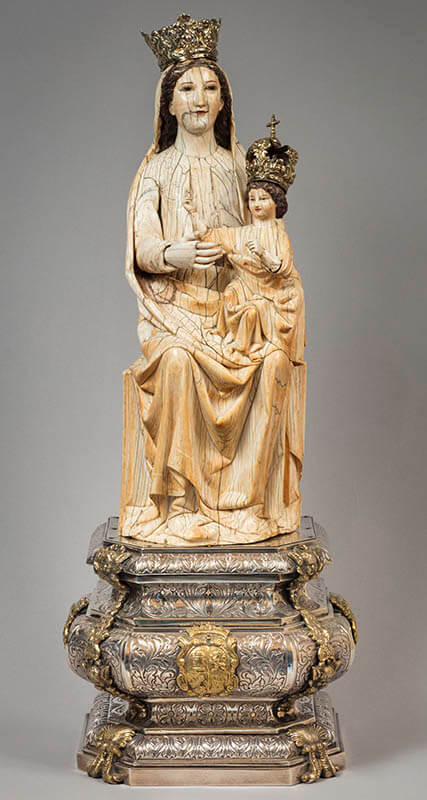
ANÓNIMO, Siglo XIII
Sacristía Mayor
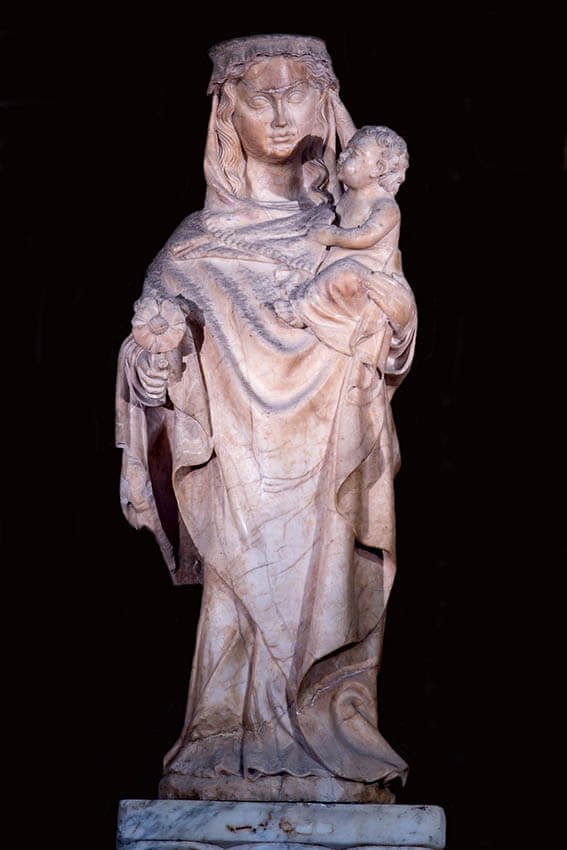
ANÓNIMO, Siglo XIV
Capilla de San Antonio
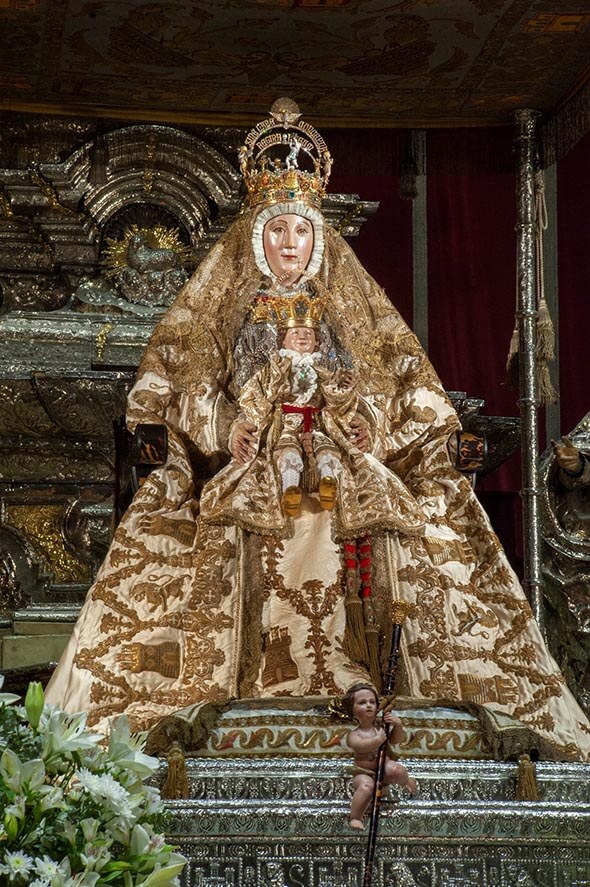
IMAGEN FERNANDINA, Siglo XIII
Capilla Real
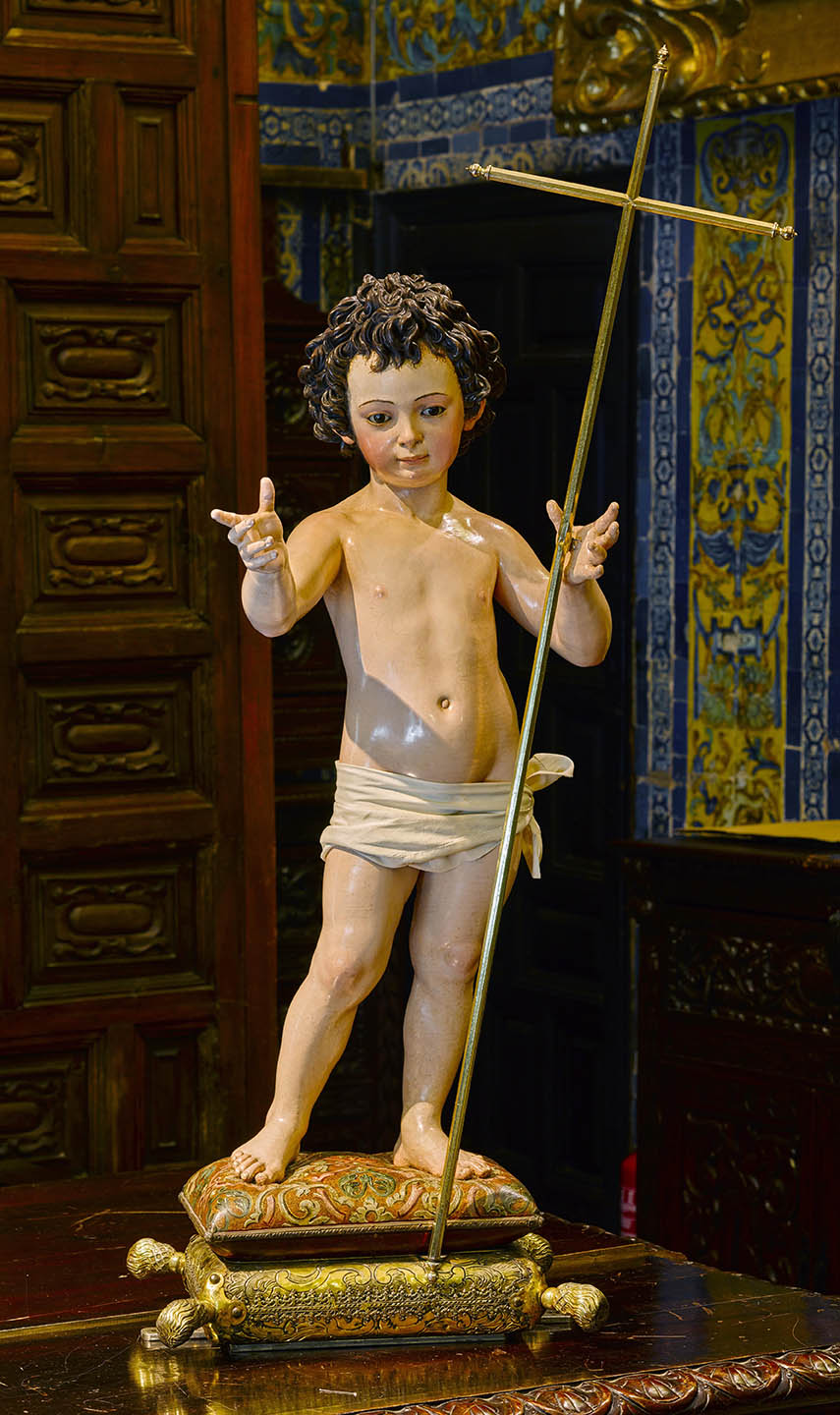
Juan Martínez MONTAÑÉS, 1606
Capilla de San Pablo
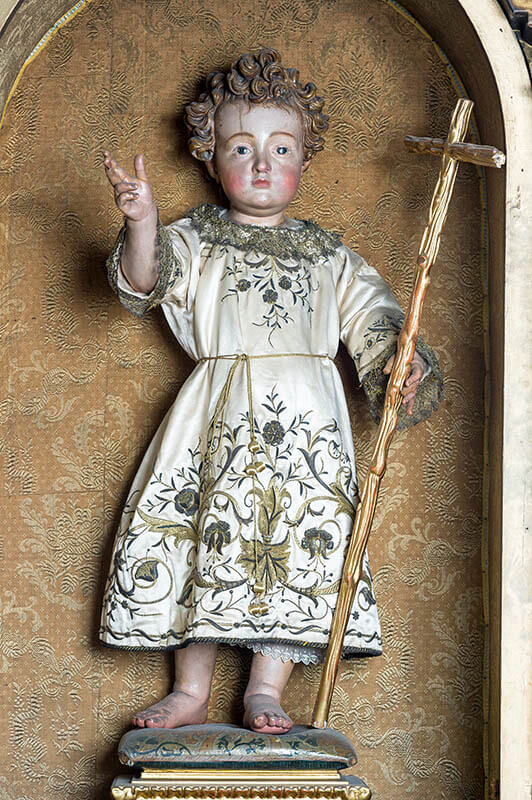
Seguidor de Martínez MONTAÑÉS, 1650
Altar del Niño Mudo
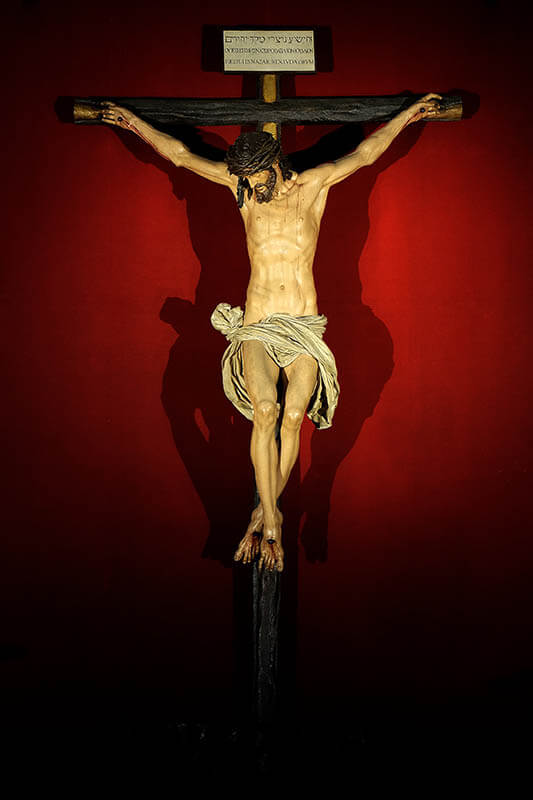
Juan Martínez MONTAÑES, 1603
Capilla de San Andrés
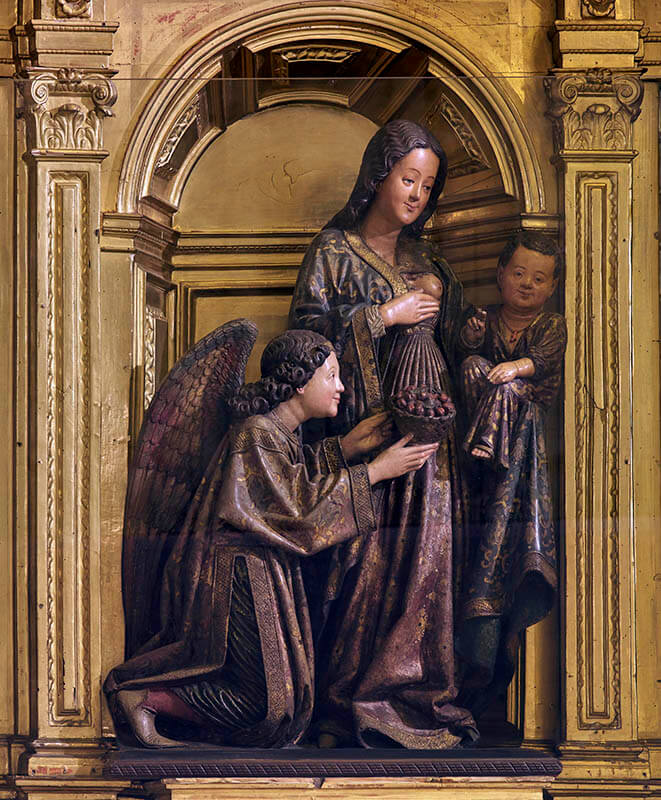
Atribuida a Lorenzo MERCADANTE, 1454
Retablo del muro occidental del Templo
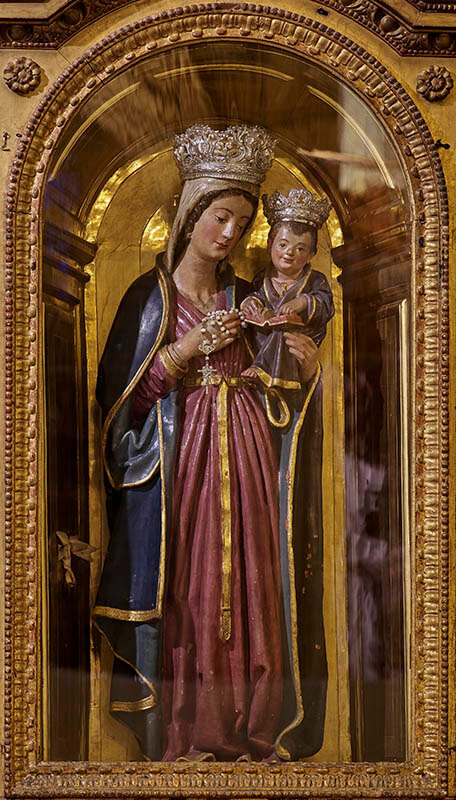
Círculo de Lorenzo MERCADANTE, Siglo XV
Retablo del muro occidental del Templo
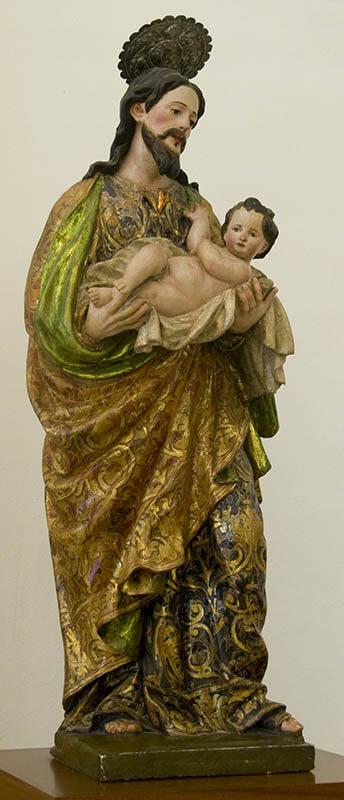
Pedro ROLDÁN, 1664
Altar del Jubileo
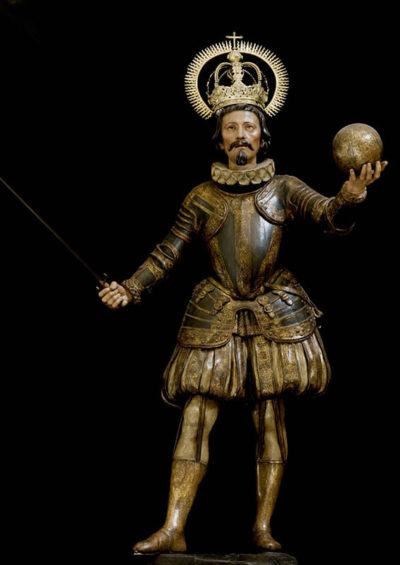
Pedro ROLDÁN, 1671
Sacristía Mayor
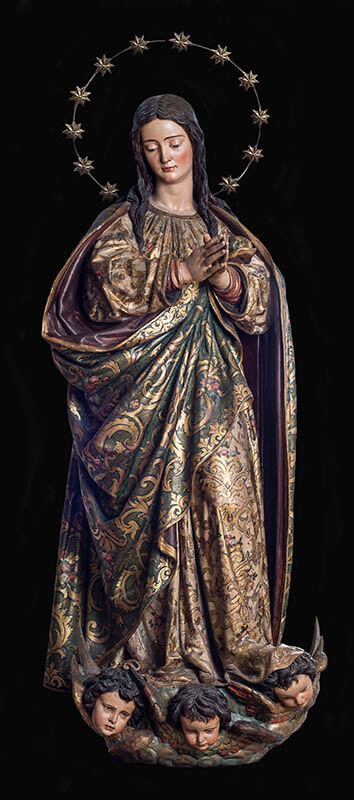
Juan Martínez MONTAÑÉS, 1629-1631
Capilla zona del alabastro






















IN THIS SECTION:
Sculpture
Thesculptural heritage of the Cathedral of Seville includes works from ancient times to the end of the 20th century and includes not only devotional images, monumental sculpture, tombs, tombstones and inscriptions, but also a good part of the altarpieces and some furniture, mentioned in other sections.
The most remote pieces are several Roman, Visigothic and Islamic tombstones and the fountain in the Patio de los Naranjos. The oldest images were donated by Fernando III and Alfonso X to the chapel of the Kings and the main altar of the Cathedral; the Virgin of the Kings, patron saint of the city, is a work directly linked to the holy king and the Virgin of the See has presided over the main altar since the last quarter of the 13th century. The Virgin of the Battles accompanied King Ferdinand III in his tomb and two tombstones with inscriptions in Castilian, Latin, Arabic and Hebrew, commissioned by his son, have remained from the funerary monument.
Gothic
From the primitive Mudejar Cathedral we preserve other images such as the Virgen de los Olmos, the Crucified of the Millón from the end of the 13th century that crowns the main altarpiece, some tombstones and sepulchers such as that of Mate de Luna (+1299). According to documentation, the first tombs with sculpted effigies were those of the Pérez de Guzmán family and that of Archbishop Don Gonzalo de Mena (+1401) is a tumulus with the effigy of the deceased lying down and reliefs of the life of Christ and the Virgin in alabaster.
The works of the Gothic temple were advanced when Cardinal Juan de Cervantes (+1453) died and the chapter commissioned his alabaster tomb to the Norman sculptor Lorenzo Mercadante de Bretaña, whose stay coincided with the apogee of Flemish forms in Seville and the beginning of monumental sculpture in the western doorways, the Nativity and the Baptistery, whose figures and reliefs he modeled in clay.
Monumental sculpture in terracotta is a late medieval plastic manifestation, which in Seville reached high quality levels from the middle of the 15th century and continued in later periods, mainly due to the lack of nearby stone quarries suitable for carving. Pedro Millán modeled, at the beginning of the 16th century, the images for the altar of the Virgin of Pilar and completed the sculpture of the western façades, one of the most interesting sets of European monumental sculpture.
Renaissance
At the beginning of the 16th century, other sculptors such as Sebastián de Almonacid made images for the platforms of the triforiums, for other altars endowed by various members of the chapter and Doménico Fancelli was in Seville to install the tomb of Cardinal Hurtado de Mendoza in the chapel of Antigua, which had been commissioned by the Duke of Tendilla to house the remains of his uncle. The assembly of the sepulcher in 1510, marked a deep imprint on the Renaissance works of the alabaster chapels. Early Renaissance works are the decoration of the main sacristy, the baptismal font and two reliefs imported from the Florentine workshop of Andrea de la Robbia and the sculpted decoration of the main sacristy.
In the first decades of the 16th century, Miguel Perrin was in charge of making the new terracotta images for the closing of the transept that collapsed in 1510, the Renaissance sculptural program that renovated the Perdón door in 1519-1521 and endowed with a Renaissance iconography the two eastern doors, of the Epiphany and the Epiphany. of Entry into Jerusalem. Likewise, in 1522 the completion of the main altar led to the realization of an ambitious iconographic program of fifty-six terracotta figures for the exterior walls and the front of the main chapel, which was begun by the same sculptor and completed by Juan Marín and Diego de la Pesquera in the third quarter of the 16th century.
The Mannerist period left splendid examples in the time of the master builder Hernán Ruiz and his successors, with whom the sculptors Juan Bautista Vázquez el Viejo, Diego de la Pesquera and Juan Guillen collaborated. These and others carved the reliefs of the chapter house and the antechamber, completed the enlargement of the main altarpiece, the exterior walls of the main altar, made pieces for the liturgical furnishings and the monumental weathervane that Bartolomé Morel cast in 1568 to crown the bell tower of the Giralda.
Baroque
The most famous sculptors of the Sevillian Baroque school undertook the altarpieces of numerous chapels whose titular images enjoy great devotion, carved tombs and furniture, reformed the Holy Week monument and sculpted images, among which those of Saint Ferdinand, canonized in 1671, stand out. Works by Juan Martínez Montañés, Pedro Roldán, Juan de Arce, Francisco and Dionisio de Ribas, Juan de Mesa, Alonso Martínez and Francisco Ruiz Gijón occupy the altars and chapels of this temple, where, in addition, we can find interesting ivory carvings of different origins and characters.
Neoclassicism and 19th century
The new flooring of the Cathedral in the XVIII century moved the most important tombs to the trascoro, whose slabs were renovated and caused the loss of numerous Renaissance and Baroque tombstones. At the end of the 19th century the sculptors Ricardo Bellver, Agapito Valmitjana, José Esteve, Pedro Arnal, Alfonso Bergaz and Adolfo López Rodríguez made the tombs of Cardinals de la Lastra, Cienfuegos and Lluch Garriga and undertook the monumental sculpture of the portals of the Assumption, Ascension and San Cristóbal of accentuated neo-Gothic character. In 1899 the remains of Admiral Christopher Columbus arrived in Seville, placed three years later in a mausoleum designed by Arturo Mélida y Alinari in 1891.
Sculpture during the 20th century has had a marked funerary character since 1812, when Joaquín Bilbao completed the tomb of Cardinal Marcelo Spinola. Then Mariano.